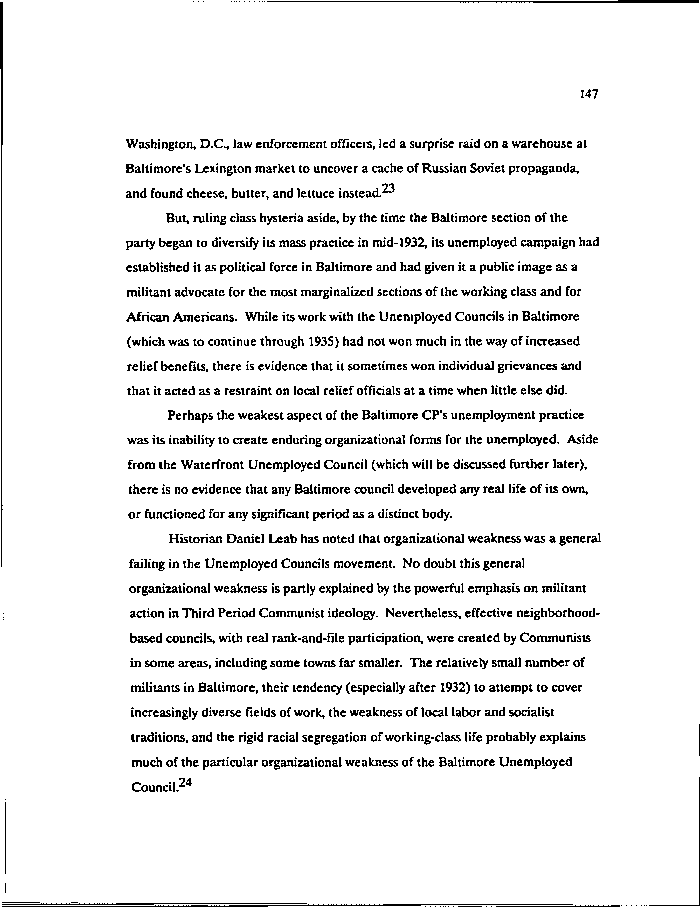|
147
Washington, D.C., law enforcement officeis, led a surprise raid on a warehouse at
Baltimore's Lexington market to uncover a cache of Russian Soviet propaganda,
*)"\
and found cheese, butter, and lettuce instead.
But, ruling class hysteria aside, by the time the Baltimore section of the
party began to diversify its mass practice in mid-1932, its unemployed campaign had
established it as political force in Baltimore and had given it a public image as a
militant advocate for the most marginalized sections of the working class and for
African Americans. While its work with the Unemployed Councils in Baltimore
(which was to continue through 1935) had not won much in the way of increased
relief benefits, there is evidence that it sometimes won individual grievances and
that it acted as a restraint on local relief officials at a time when little else did.
Perhaps the weakest aspect of the Baltimore CP's unemployment practice
was its inability to create enduring organizational forms for the unemployed. Aside
from the Waterfront Unemployed Council (which will be discussed further later),
there is no evidence that any Baltimore council developed any real life of its own,
or functioned for any significant period as a distinct body.
Historian Daniel Leab has noted that organizational weakness was a general
failing in the Unemployed Councils movement. No doubt this general
organizational weakness is partly explained by the powerful emphasis on militant
action in Third Period Communist ideology. Nevertheless, effective neighborhood-
based councils, with real rank-and-file participation, were created by Communists
in some areas, including some towns far smaller. The relatively small number of
militants in Baltimore, their tendency (especially after 1932) to attempt to cover
increasingly diverse fields of work, the weakness of local labor and socialist
traditions, and the rigid racial segregation of working-class life probably explains
much of the particular organizational weakness of the Baltimore Unemployed
Council.24
|

